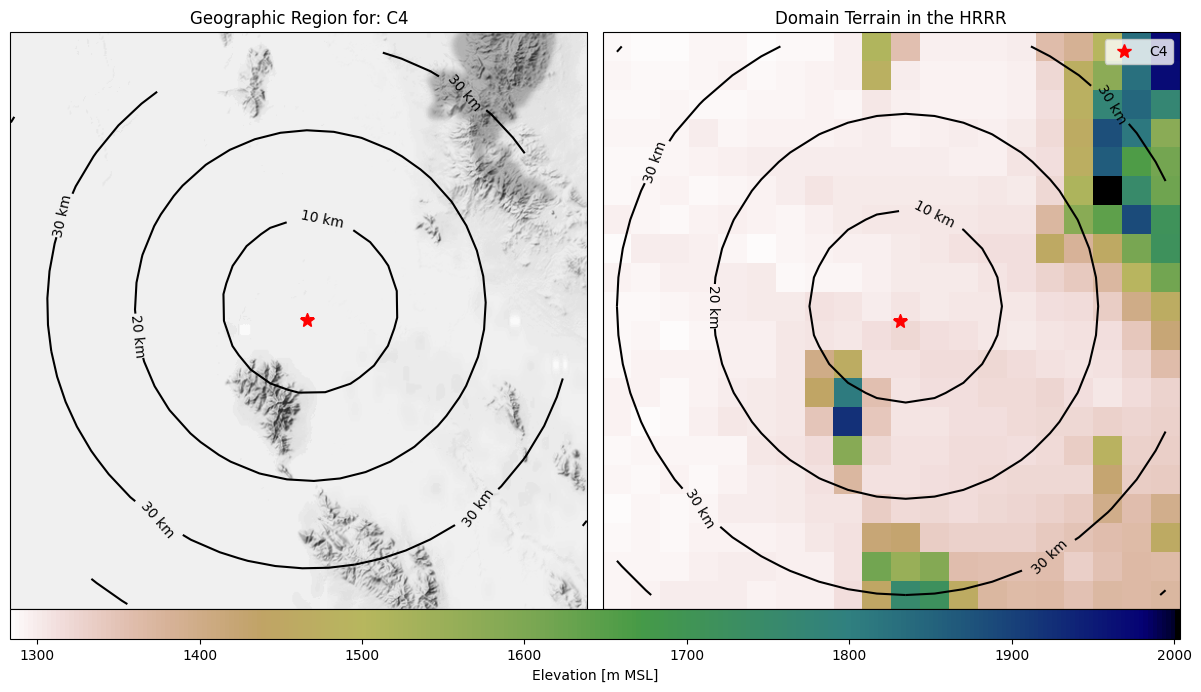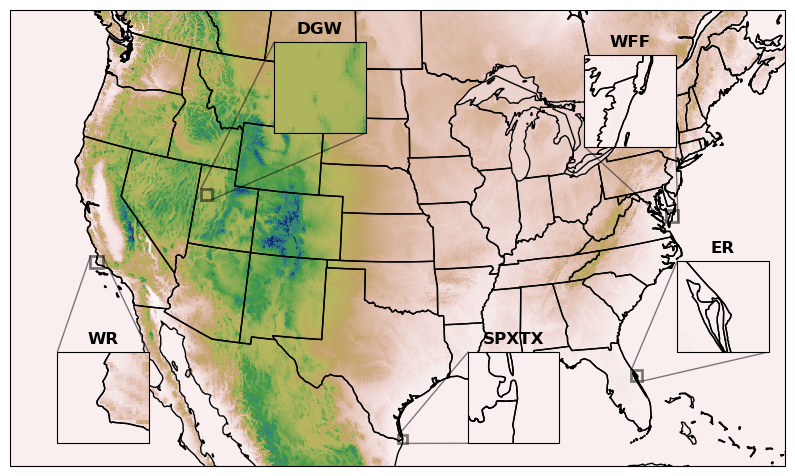Current Domain for DFO Predictions:

Current Yield Histogram for Overpressure Calculations:


Prototype Information
This webpage provides hourly real-time output from the three-dimensional distant focusing overpressure (3D-DFO) prototype risk prediction system. Using the Millersville University of Pennsylvania Department of Earth Sciences computing cluster (NSF Grant #2019042), weather predictions from the NOAA High Resolution Rapid Refresh (HRRR) are downloaded and used as input into the 3D-DFO tool. The cluster is used to run ray tracing code (infraGA) and provide overpressure predictions. The cluster pulls the most recent HRRR forecast data and begins running the analysis every 15 minutes past the hour. The domain for the DFO predictions may shift based upon current launch operations and activities of the DFO Common Standards Working Group.
Prototype Method:
With each run, the following steps are performed. First, the cluster downloads the most recent HRRR forecast data. Then, this HRRR data is parsed and written in a format that can be ingested by Los Alamos National Laboratory (LANL) infraGA code. Using the Message Passing Interface (MPI), infraGA launches multiple rays starting at ground level outwards from the pad location. If the ray intersects the ground, it is reflected, and the intersection point is recorded. In addition, the geometric attenuation (raytube size) is also recorded in dB and is called the Acoustic Sound Focusing Gain (ASFG). Once the ray tracing is completed, Python code grids the ray ASFG values into 1 km by 1 km bins by using the ray that lands in that area with the largest ASFG. This treats the acoustic focusing as a "worst case scenario". After the gridding is complete, the ASFG is converted into a "Focus Factor". This Focus Factor is a multiplicitive factor that scales an expected overpressure value at that range. This Focus Factor generates areas of focusing (FF > 1) or defocusing (FF < 1). Grid boxes where a ray is absent have a Focus Factor set to 1.
Using an overpressure-range relationship for an expected yield (e.g. AFWL), the grid of Focus Factors is converted into overpressure using each yield bin specified in a yield histogram. This allows one to assess the probability of a location having an overpressure above a specific value (e.g., > 0.1 psi).
Navigating This Website:
Navigation of this website can be performed on the navigation bar at the top of the webpage. Computational resources right now limit the DFO analysis to only one domain at a time. Underneath the "Home" tab, the active domain is shown for DFO predictions. This domain shown is where the 3D-aware ray tracing is being performed using infraGA. Underneath the "Yield Histogram" tab, the current yield histogram used to compute the predictions from the ray landing points is shown.
A quicklook of the weather and propagation conditions forecasted for different domains can be found underneath the "Weather" tab. This can be used to view the weather conditions across different launch sites. In each image shown in the looper, the left hand image shows the near-surface conditions. This can be used to get a sense of the spatial heterogeneity of the weather. On the right hand side are the expected acoustic propagation conditions that may modify the blast wave. Please note that this classification algorithm is somewhat crude and provides an estimate of the along-radial propagation conditions. Additional information about this algorithm can be found in the Blumberg and Fadl 2022, JSSE paper.
Underneath the "Predictions" tab are ways to visualize the focusing and overpressure output from the above method. The "Map" section provides an interactive map to see the weighted average (given by the yield histogram) overpressure predictions. One can also look at the focusing points to identify regions of focusing and defocusing. Other sections underneath this tab include a looper to see static (non-interactive) images of the focusing and overpressure predictions.
Future Features
Some additional features may be added to this website depending upon need and interest::
- Output from a crude pollutant trajectory model to visualize possible dispersion of toxics.
- Automated switching of the prediction domain based upon the U.S. launch schedule.
- Include forecast from Alaska-HRRR model to do predictions for Pacific Spaceport Complex - Alaska.
- Portal to download overpressure prediction files to ingest into ARCTOS's 3DFO program.